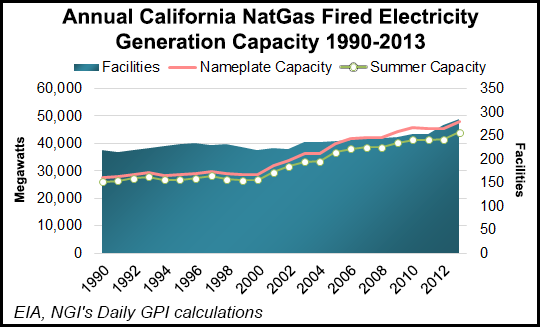Decision on Controversial Repowered NatGas Plant Delayed by CPUC
California regulators on Thursday delayed action on a 20-year tolling agreement power contract between NRG Energy Inc. and Sempra Energy’s San Diego Gas and Electric Co. The deal involves NRG’s long-stalled plans to replace its natural gas-fired generation plant in Carlsbad, CA, in San Diego County.

Several of the five-member California Public Utilities Commission (CPUC), including two of its newest commissioners, are troubled by approving a deal that will lead to a major new fossil fuel plant in the state, given their commitment to the state’s climate change policies.
“This is another of those tough decisions we have to make,” said CPUC President Michael Picker, whose alternate proposal was up for consideration by the regulatory panel. A CPUC administrative law judge (ALJ) had recommended denying the agreement in favor of looking at pending proposals for getting new power supplies in the area through renewables and other environmentally cleaner options.
Picker’s alternative would have reduced the 600 MW of peaking capacity in the original proposal to 500 MW, with the other 100 MW to be satisfied through preferred resources, such as energy efficiency, storage and renewable sources. This still troubled CPUC members Catherine Sandoval, Carla Peterman and Liane Randolph.
As a result, the CPUC will hold an all-parties hearing May 19 to ask questions of representatives from NRG and SDG&E, along with CPUC staff and the ALJ. The issue, with Picker’s proposed alternative, will be on the agenda two days later.
After years of debate and changes, the CPUC is still unsettled about approving a project that is the result of a recent compromise hammered out among Carlsbad government/business officials, SDG&E and NRG, calling for the transformation of the 61-year-old gas-fired plant into a modern fast-start facility on a portion of the existing site (see Daily GPI, April 9).
In defending his proposed conditional approval, Picker emphasized that there is a reliability issue involved in the case because it is located in an area where there is “a weak spot” in the state’s power grid.
The California Independent System Operator supports the NRG-SDG&E agreement.
A Houston-based NRG spokesperson told NGI that the proposed repowering “remains the only and best approach to have the requisite flexible capacity online to enable additional renewable generation and preserve the reliability of the grid by 2018.” He said NRG is confident the CPUC will act this month, which the company maintains is necessary for the plant to be constructed and online by 2018, when Encina is set to be retired.
Over the years, the proposal for repowering the 965 MW Encina plant has changed from building a smaller baseload plant to the current compromise for building 500 MW of gas-fired peaking power under a 20-year contract between NRG and SDG&E. The existing plant is mandated to close at the end of 2017 under the state’s phase out of coastal power plants using seawater for cooling.
“I am not eager to approve another gas-fired power plant, but we can only achieve the reliability we need in that area through the gas option,” Picker said. He said the new peaking unit will not so much displace other power sources as enable more renewables to be used.
Commissioner Mike Florio supported Picker’s proposal, but deferred to his other colleagues, all of whom raised questions, including whether the concerns about reliability were adequately documented in the record of the case, for which there were public hearings by the CPUC late last year.
The current case dates back to 2012, when after several years of processing and various starts and stops, NRG’s plan to repower its gas-fired plant in Carlsbad using a fraction of the 100-acre existing prime seaside acreage was unanimously approved by the California Energy Commission (CEC), when Peterman was one of the five CEC commissioners (see Daily GPI, June 4, 2012).
© 2024 Natural Gas Intelligence. All rights reserved.
ISSN © 1532-1231 | ISSN © 2577-9877 |
